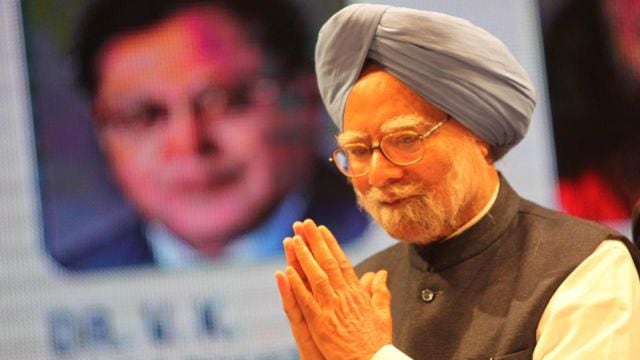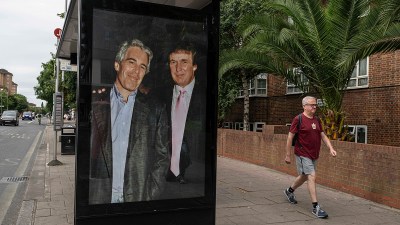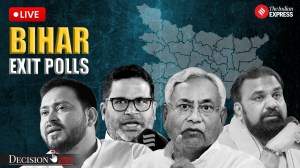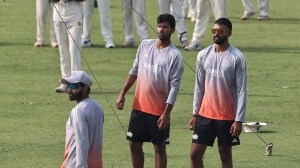If India Inc is so confident today, much of it is owed to Manmohan Singh, who as Finance Minister in 1991 initiated broad-based economic reforms and opened up India to the world. Despite opposition within, he moved on with the full backing of then Prime Minister PV Narasimha Rao; and even then he did so cautiously, sensitising people along the way on the need to revisit old orthodoxies.
As he signed off after his second term as the Prime Minister in 2014, he signed off saying “history will be kinder to me”. For a man with no background in politics, and with degrees from the universities of Cambridge and Oxford to back his middle-class upbringing, there is no debate over Singh’s place in history: as someone who played a pivotal part in steering India away from the shackles of a socialist era that endured for over four decades and then went on to pilot the phase in India’s history when the domestic economy clocked its fastest economic growth, when the country was billed as the new Asian miracle, and when over 300 million people were pulled out of extreme poverty.

Singh’s enduring legacy would be his achievement, under the helmsmanship of former Prime Minister Narasimha Rao, of ushering in an era of reforms in 1991 — from the controversial two-stage devaluation to liberalisation and globalisation policies. Then as prime minister over a decade down the line, Singh’s leadership also saw the crucial rollout of legislations for right to education and rural employment guarantee. The power of education in his own life journey was cited by him on the occasion of the Right to Education Act coming into force in 2010, when he gave his example of being born in a family of modest means and rising due to his education. “I read under the dim light of a kerosene lamp. I am what I am today because of education. I want every Indian child, girl and boy, to be so touched by the light of education,” he had said.
Story continues below this ad
Singh’s reforms in 1991, which sought to liberalise the economy from the shackles of socialist regulations in place till then and ended the ‘Licence Raj’ through industrial policy reforms, cemented his position as the Finance Minister having helped India wade through a critical balance of payments crisis, where the country had foreign exchange reserves sufficient for just two weeks of imports as against the normal safe level of three months of import cover at that time.
The reforms were seen to have come through the combination of the political will displayed by the then Prime Minister PV Narasimha Rao and the acumen of Singh, a trained economist. But it was not just Singh’s skills as an economist on display during that crisis, but also his integrity. As has been noted by senior Congress leader and Member of Parliament Jairam Ramesh in his book, ‘To the Brink and Back’, Singh was worried that his personal rupee balance, born out of “modest dollar savings” from his South Commission stint in Geneva during 1987-90 would swell with the proposed changes in the rupee-dollar exchange rate with the proposed devaluation. Therefore, Singh had informed Rao that he would deposit the “windfall gains” he stood to make into the Prime Minister’s Relief Fund. And he did.
A sharp jump in oil prices in August 1990 had led to an acute economic crisis, turning the balance of payment situation unmanageable, depleting foreign exchange reserves along with massive capital outflows and pushing India closer to a possibility of default. These peculiar circumstances led to the government mounting the economic defence by devaluing the rupee on July 1, 1991, the RBI transferring over 46 tonnes of gold from its reserves to Bank of England for borrowing forex to manage immediate liquidity problems resulting from the BoP problem.
The rupee devaluation was done in two tranches of 9 per cent and 10 per cent in quick succession in a matter of three days, taking the total downward adjustment in terms of pound sterling to be 17.38 per cent and 18.7 per cent in terms of the US dollar. This two-step devaluation process was not easy. In fact, as Ramesh noted in the book, Rao had called Singh in the early hours of July 3, 1991 to halt the second devaluation. Singh then called Dr C Ranjagarajan, the then deputy governor of the RBI, at around 9:30 am to ask him to hold back the second-stage devaluation — only to be told that it had already been carried out that morning at 9 am. “The finance minister (Singh) was, of course, delighted that this had been done, but conveyed the news to the prime minister (Rao) less enthusiastically,” Ramesh wrote in the book.
Story continues below this ad
These steps were followed by the government subsequently announcing the new Industrial Policy Resolution, abolition of most trade licences, providing freedom to enterprises, opening up the country to foreign direct investment, thereby, substantially deregulating the industrial sector. The new industrial policy was presented along with the Budget by Singh as the finance minister on July 24, 1991.
With these policy reforms nearly 80 percent of the industry was taken out of the industrial licensing framework and the Monopolies & Restrictive Trade Practices (MRTP) Act was repealed to eliminate the need for prior approval for capacity expansion by companies. The new policy reduced the number of areas reserved only for public sector companies from 17 to 8. These structural reforms led to new enterprises coming into the picture both in industrial and services sectors, growth gaining momentum and a large number of Indians exiting poverty. These measures were followed up with liberalisation of the banking sector and capital markets.
In line with the recommendations of the Narasimham Committee Report of 1991, the government proposed to cut down the SLR (statutory liquidity ratio) from 38.5 percent to 25 percent over a three-year period, and cash reserve ratio from 25 per cent to 10 percent over a period of four years. Bank branch licensing policy and setting of interest rates by lenders were also liberalised. These measures ensured that the financial sector had the capacity to fund the economic expansion being initiated by liberal industrial and trade policy.
Singh’s term at the Reserve Bank of India from September 1982-January 1985 was also equally important. Singh, with his experience as Secretary in the Finance Ministry as well as Member Secretary of the Planning Commission, became the Governor of the RBI on September 16, 1982. After a comparatively short tenure of 16 months, he was shifted out on January 14, 1985, over a month after Rajiv Gandhi became the Prime Minister.
Story continues below this ad
Singh acknowledged in the book ‘Strictly Personal: Manmohan and Gursharan’, authored by his daughter Daman Singh, that he did have serious differences with the then Finance Minister Pranab Mukherjee when he was RBI Governor.
Singh advised the government against granting approval to Bank of Credit and Commerce International (BCCI) — a foreign bank promoted a decade earlier by the Pakistan businessman Aga Hasan Abedi — to open a couple of branches in India. However, the government wanted the RBI to grant BCCI a licence, and directed it to approve the application. With the RBI led by Singh opposing it, the government took to the Cabinet a proposal to strip the RBI of its power to licence foreign banks. Singh protested and sent his resignation to Mukherjee and the Prime Minister. However, he was persuaded by the government to continue as the Governor. Singh and Mukherjee reportedly had differences of opinion on the hostile takeover plan of Escorts and DCM by UK-based industrialist Swraj Paul.
Mukherjee wrote in his book ‘The Turbulent Years’ that the decision to move Singh to the Planning Commission from the RBI was taken by then Prime Minister Rajiv Gandhi. “I had absolutely no role in Dr. Manmohan Singh’s departure from the RBI. By December 1985, (then) Prime Minister Rajiv Gandhi was firmly in the saddle and I was out of the Cabinet and the party,” he wrote in the book.
Singh said the RBI Governor enjoys a position of respect in our system, but the Finance Ministry always “wants to downplay the status of the Governor”. “The RBI Governor is not superior to the Finance Minister in authority. And if the finance minister insists, I don’t see that the governor can really refuse unless he is willing to give up his job,” Singh’s daughter’s book quoted him as saying.
Story continues below this ad
When Singh was the Governor, the National Clearing Cell (NCC) was set up by the bank to introduce mechanised cheque processing and the national clearing of cheques in November 1983. That was the beginning of automation of fund transfers in the banking system.
In January 1984, the RBI’s powers were strengthened following enactment of the Banking Laws (Amendment) Act, 1983. This enabled the RBI to widen the activities that banks could undertake – such as leasing — and provided nomination facilities to account holders and streamlined the returns. The RBI was then able to prohibit unincorporated bodies from accepting deposits from the public except to a specified extent amongst others. During his tenure comprehensive legal reforms were also carried out related to the banking sector and a new chapter was introduced in the Reserve Bank of India Act and the Urban Banks Department was set up to supervise the affairs of urban cooperative banks.

































